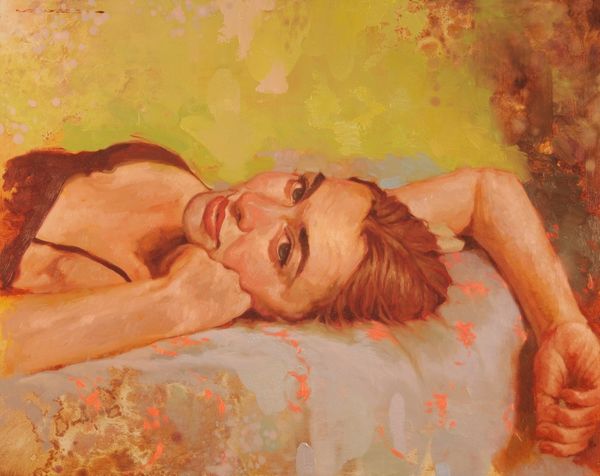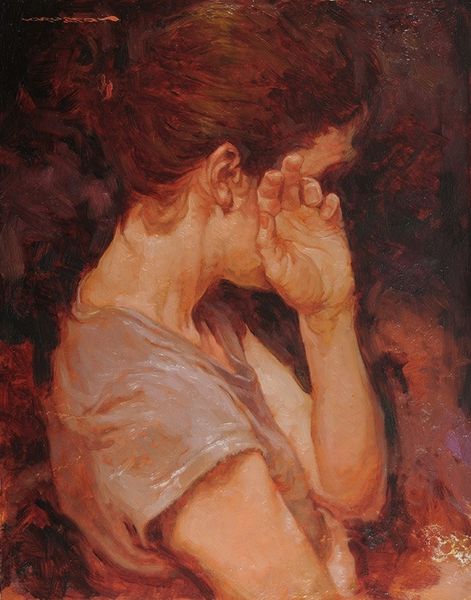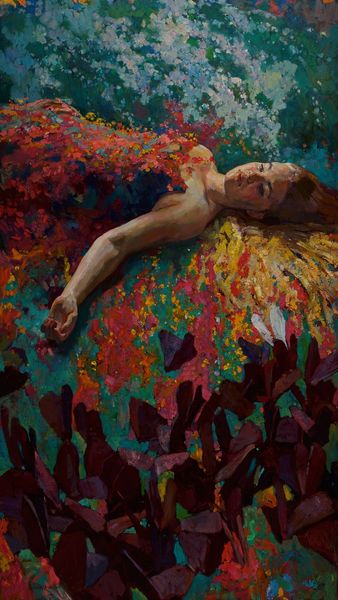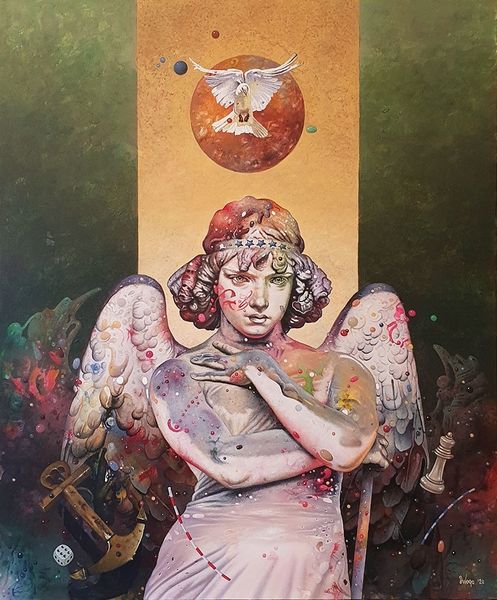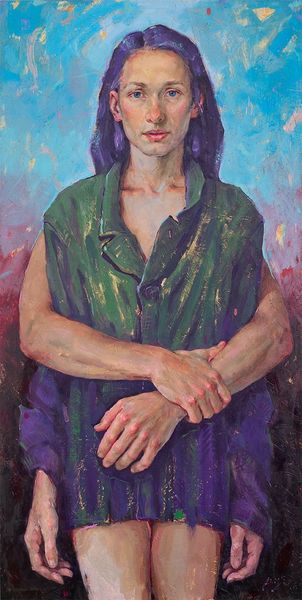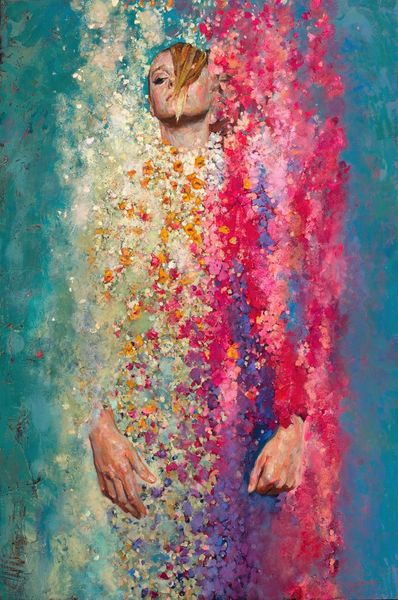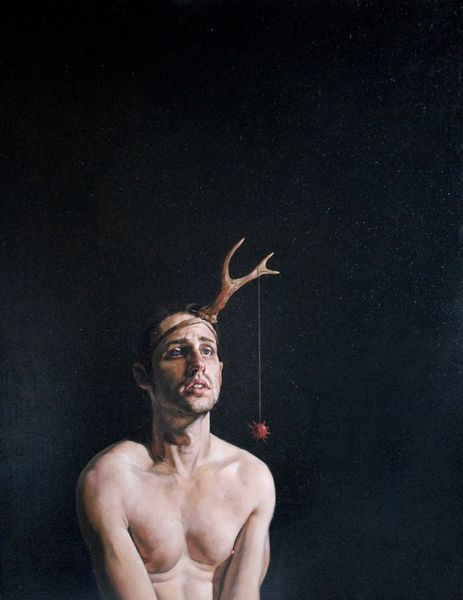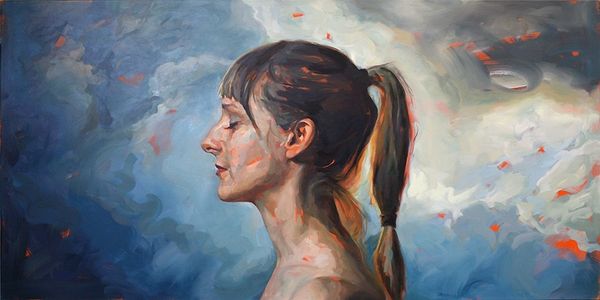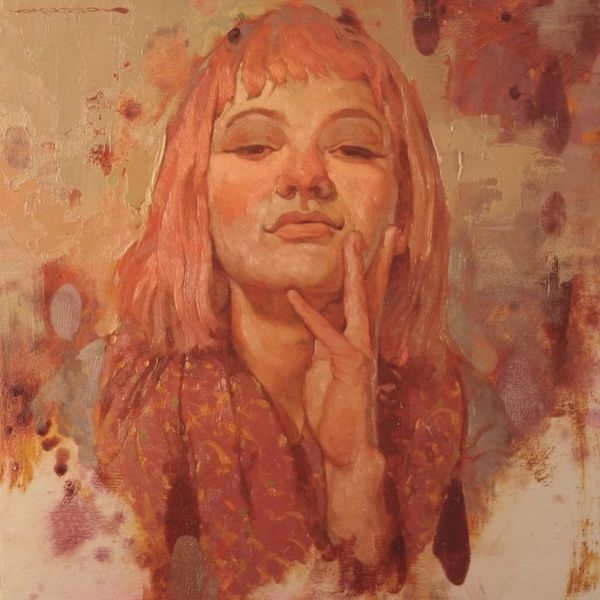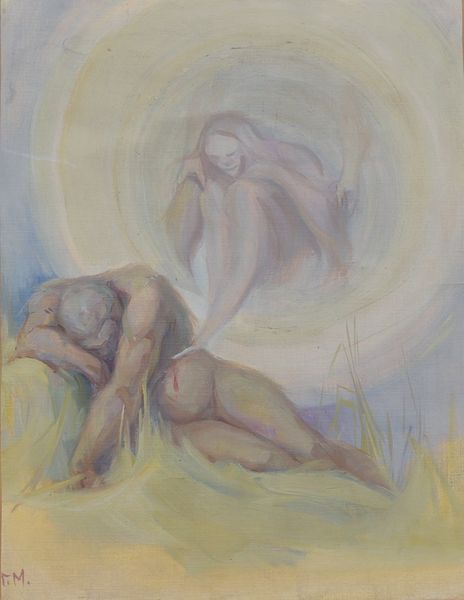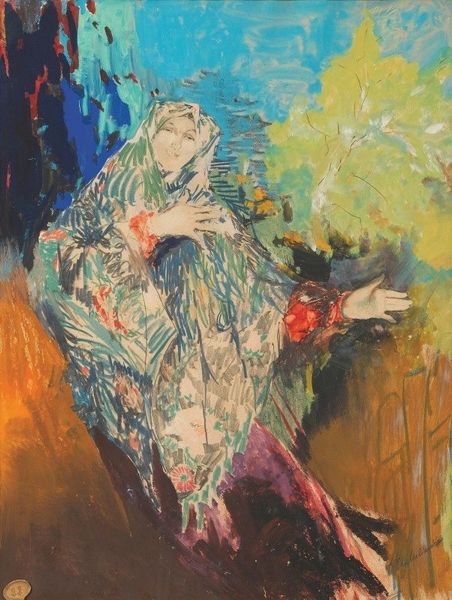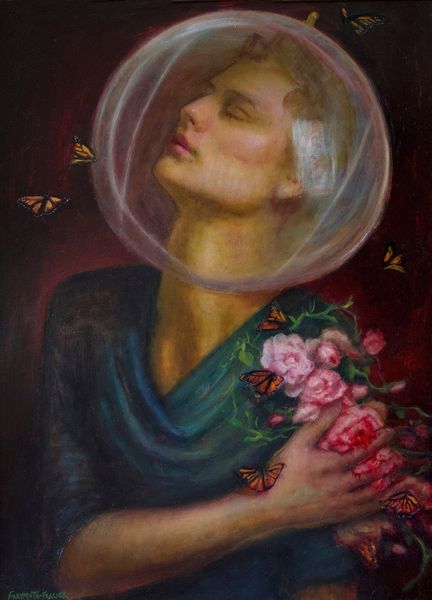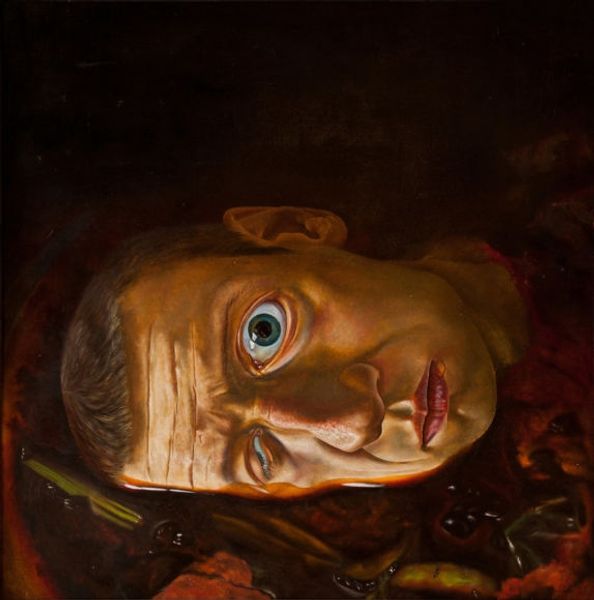
painting, oil-paint
#
portrait
#
figurative
#
painting
#
oil-paint
#
figuration
#
oil painting
#
neo expressionist
#
neo-expressionism
#
romanticism
#
realism
Copyright: Modern Artists: Artvee
Editor: This is "Like moths to the light," an oil painting by Joseph Lorusso. The subject's pose feels so raw and exposed against that dark, almost volatile background. What’s your interpretation of a work like this? Curator: Well, I think its engagement with the neo-expressionist style plays a key role. Consider the social context in which neo-expressionism gained prominence—a late 20th-century art world grappling with identity politics and a perceived loss of authenticity. The painting’s title, "Like moths to the light," hints at the subject's longing and vulnerability, echoing themes of displacement and the search for belonging. Do you see any commentary on institutional power structures here? Editor: Hmmm…I'm not sure about *power structures*. But I see the figure surrounded by darkness yet yearning for the light as maybe mirroring the individual versus societal expectations? Curator: Precisely. The art world has always played gatekeeper and validated specific forms and messages. Neo-expressionism challenged that, allowing space for personal experience, sometimes messy and imperfect, like the figure’s raw emotionality, that reflects a societal longing for genuine emotion amid institutional narratives. Does this pose a question for you? Editor: Yes, how does Lorusso’s romantic approach work to invite a larger audience, considering that most viewers aren’t considering the institutional critique when viewing the piece? Curator: Ah, that’s exactly where Lorusso is compelling as an artist! Lorusso invites participation in an emotive experience that implicitly invites the audience to unpack institutional expectations and personal longings for genuineness. By layering personal emotion within the frame, he allows the viewers to draw meaning to it from many perspectives, including societal reflections. Editor: That's a fascinating way of thinking about it! I had just seen it as a beautiful, somewhat melancholy painting, but I appreciate understanding its wider socio-historical conversation now. Curator: And that's precisely why looking at art from a historical viewpoint makes it richer. Each artistic choice invites the public into conversation with societal concerns.
Comments
No comments
Be the first to comment and join the conversation on the ultimate creative platform.
